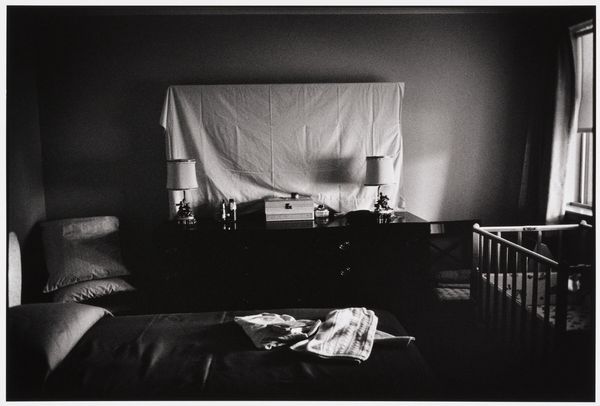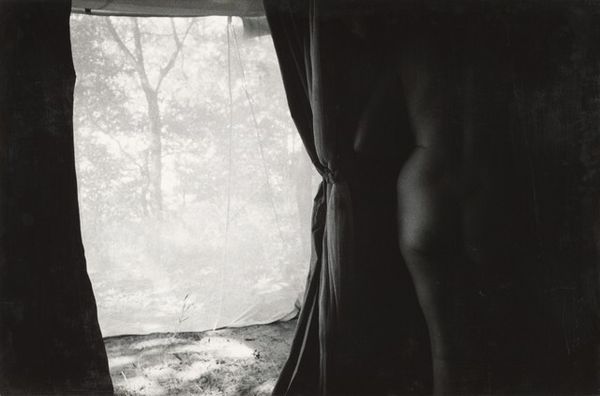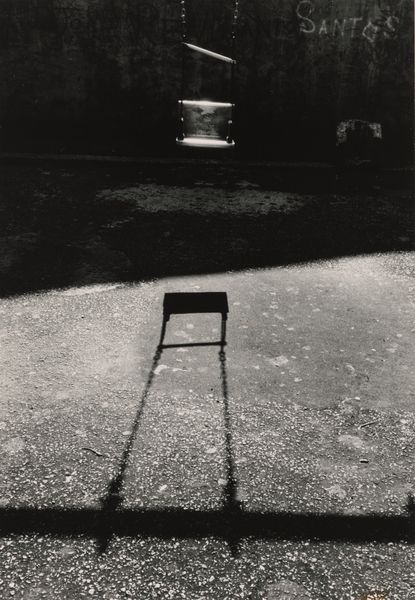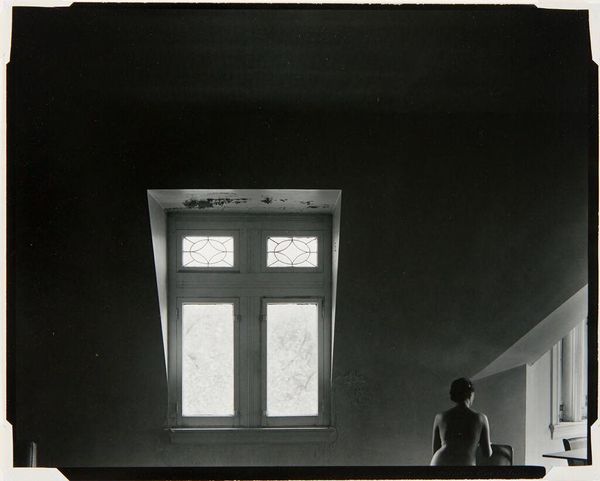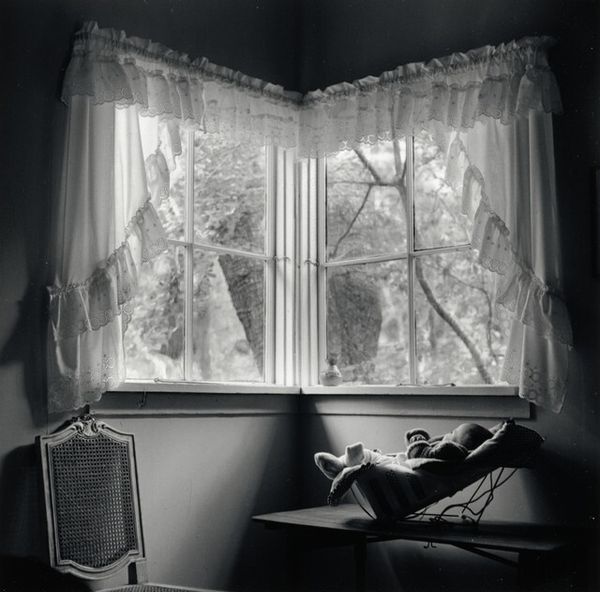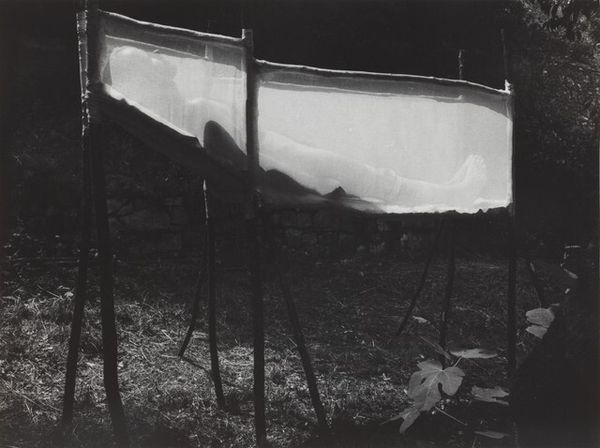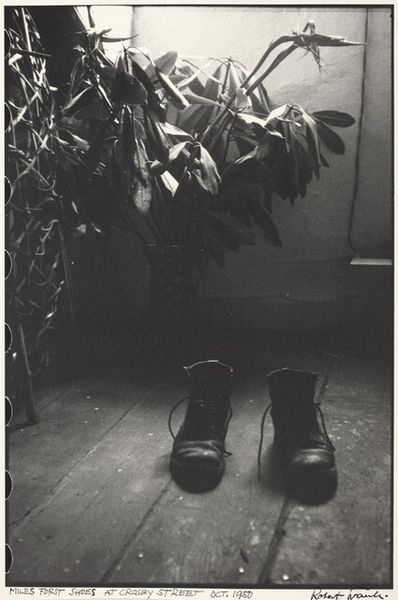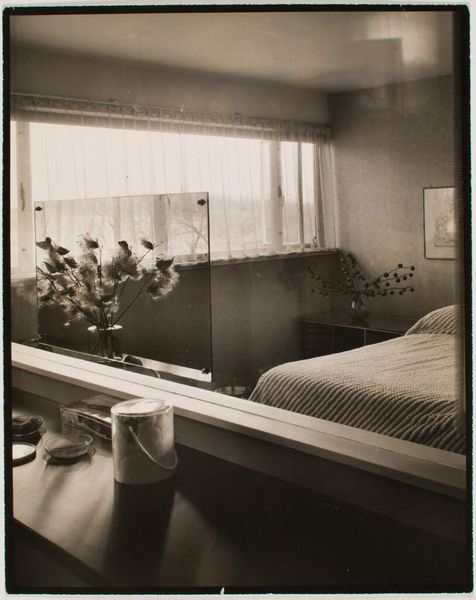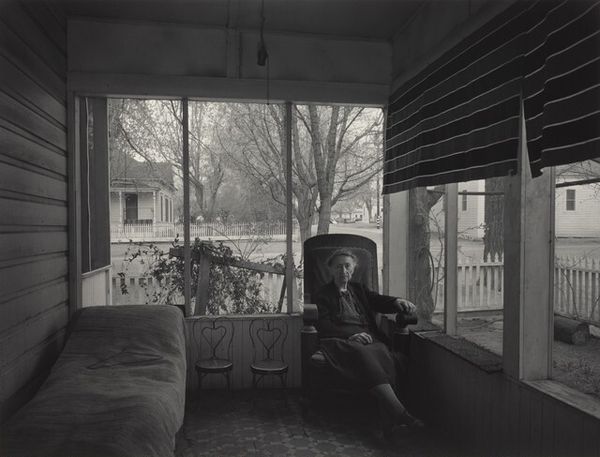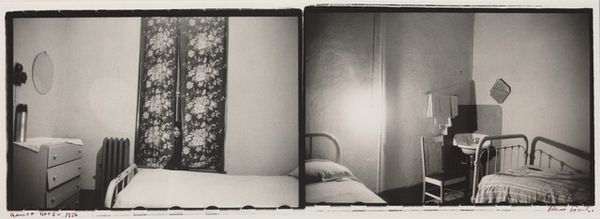
Dimensions: sheet: 35.4 × 28.1 cm (13 15/16 × 11 1/16 in.) image: 32.7 × 21.8 cm (12 7/8 × 8 9/16 in.)
Copyright: National Gallery of Art: CC0 1.0
Editor: This gelatin-silver print is called "Shoes, Fort Scott, Kansas" and it was taken after 1950 by Gordon Parks. It's a black and white image, a pair of high-button shoes abandoned on the floor, with domestic objects arranged neatly near the window. The overall feel is quiet, maybe a little melancholic. What can you tell me about this work? Curator: Well, beyond its visual simplicity, this photograph speaks volumes about identity, place, and the complex layers of history. Parks returned to his hometown of Fort Scott to document the lives of his former classmates. This image invites us to reflect on the societal pressures and constraints experienced, particularly within Black communities, during that era. Editor: Constraints? How so? Curator: The shoes, for example, suggest a story of movement and perhaps restricted mobility. They represent a journey, but also a confinement, if we think about the social and economic realities faced by African Americans in mid-20th century Kansas. The objects near the window suggest domesticity, maybe femininity. Are they tools or maybe burdens? Do these offer clues about the subject’s identity? Editor: That's an interesting point – seeing the shoes as representative of larger systemic issues. I was mostly just struck by the composition and the light. Curator: And that is completely valid. But photography, particularly documentary photography, can be a powerful tool for social commentary. Parks used his lens to challenge prevailing narratives and expose inequality. Think about how this image fits within the context of the Civil Rights Movement. Editor: So, viewing the shoes through that lens gives the photograph another layer of meaning… connecting it to themes of segregation, economic struggle and ultimately, resilience? Curator: Exactly. It encourages a deeper consideration of the subject’s personal narrative, and the broader social forces at play. What do you take away now? Editor: I see how Parks turns a seemingly ordinary scene into something profoundly meaningful by giving voice to the experiences of Black Americans. The work now becomes both beautiful and unsettling. Thank you.
Comments
No comments
Be the first to comment and join the conversation on the ultimate creative platform.
